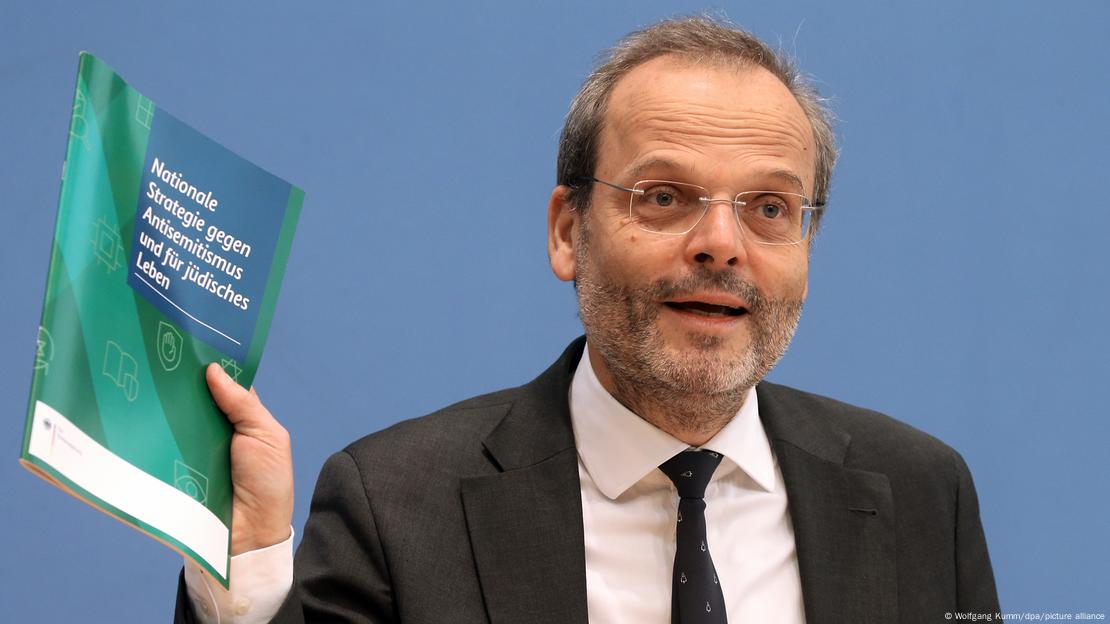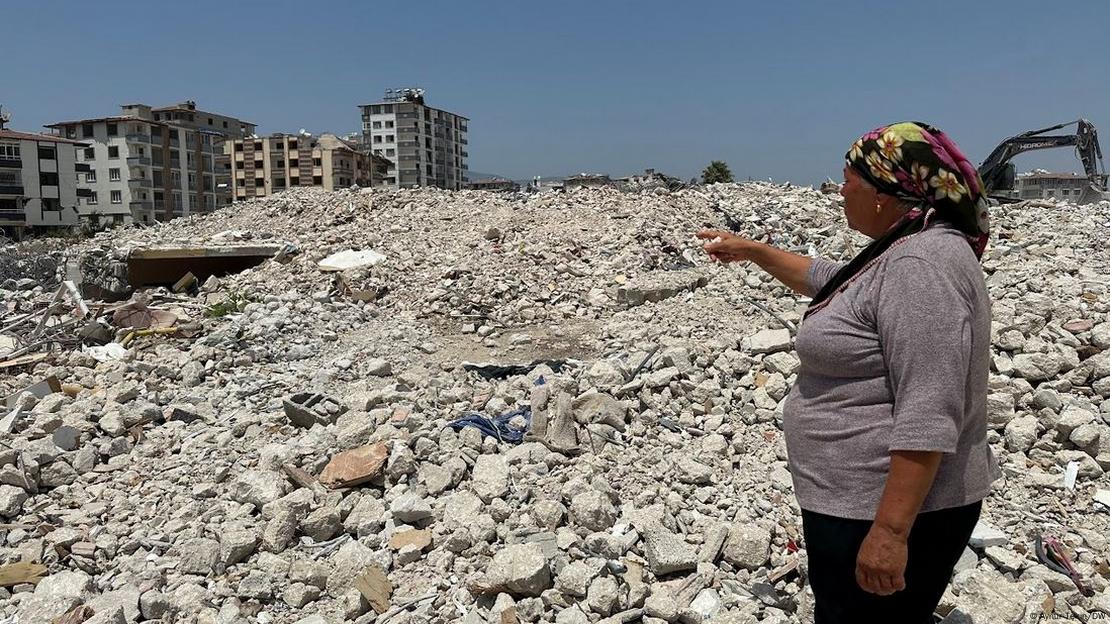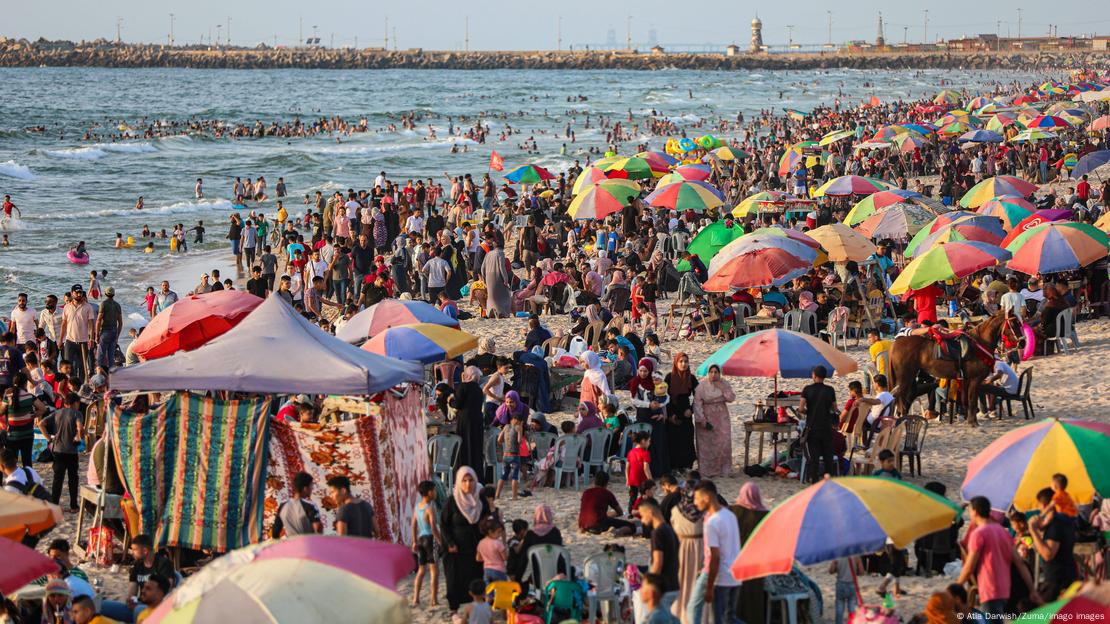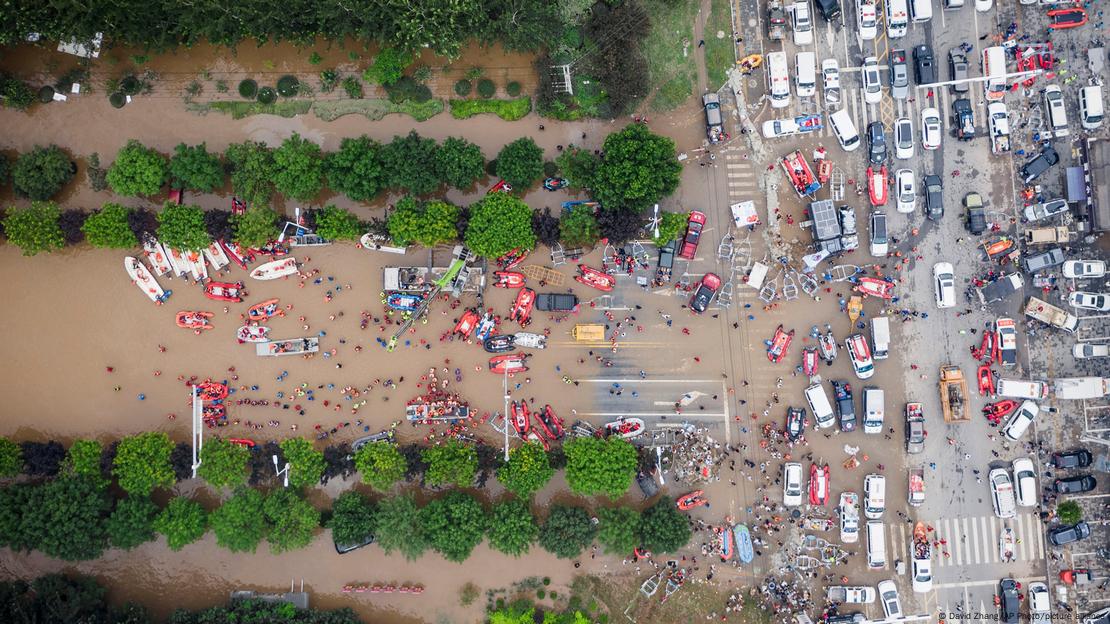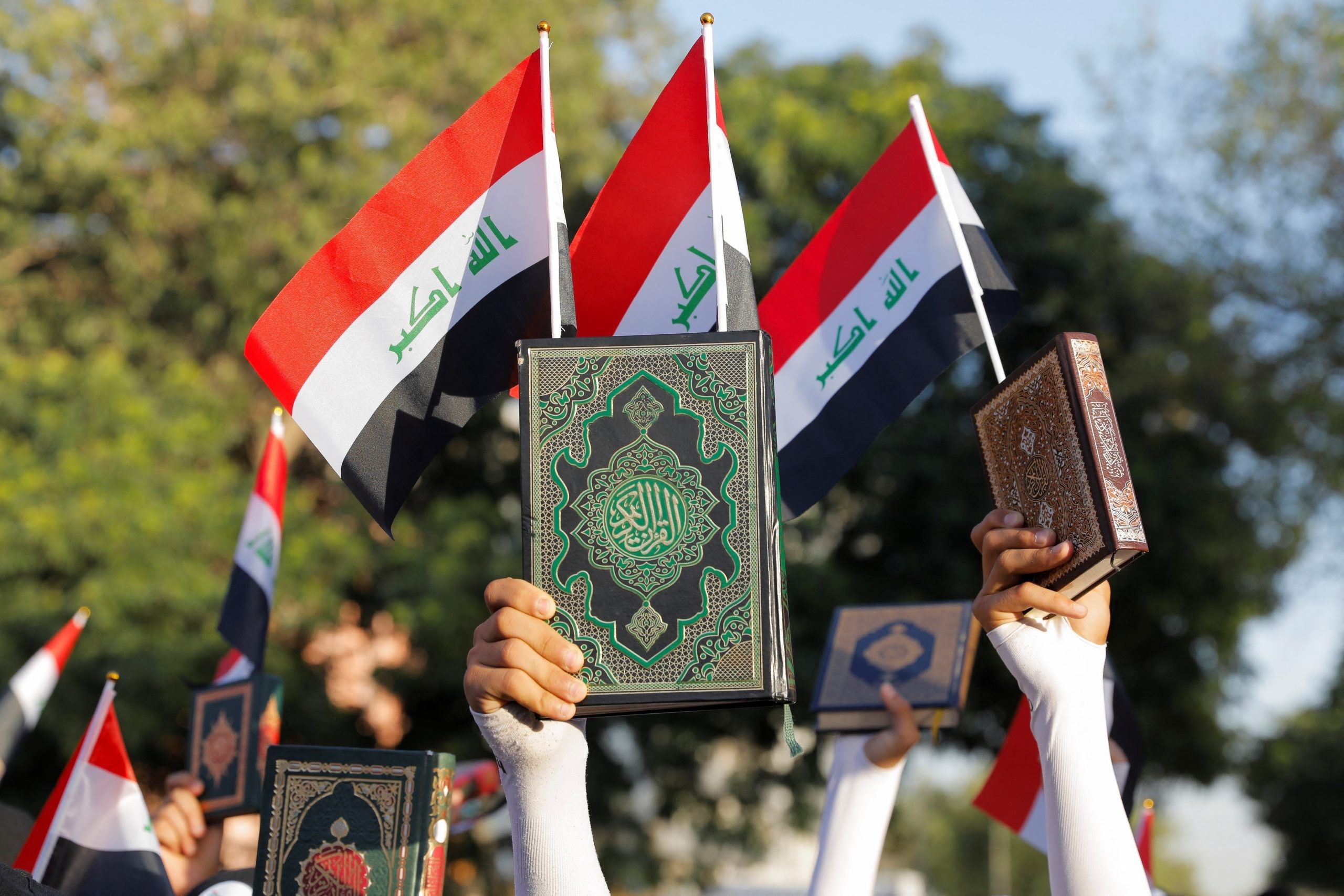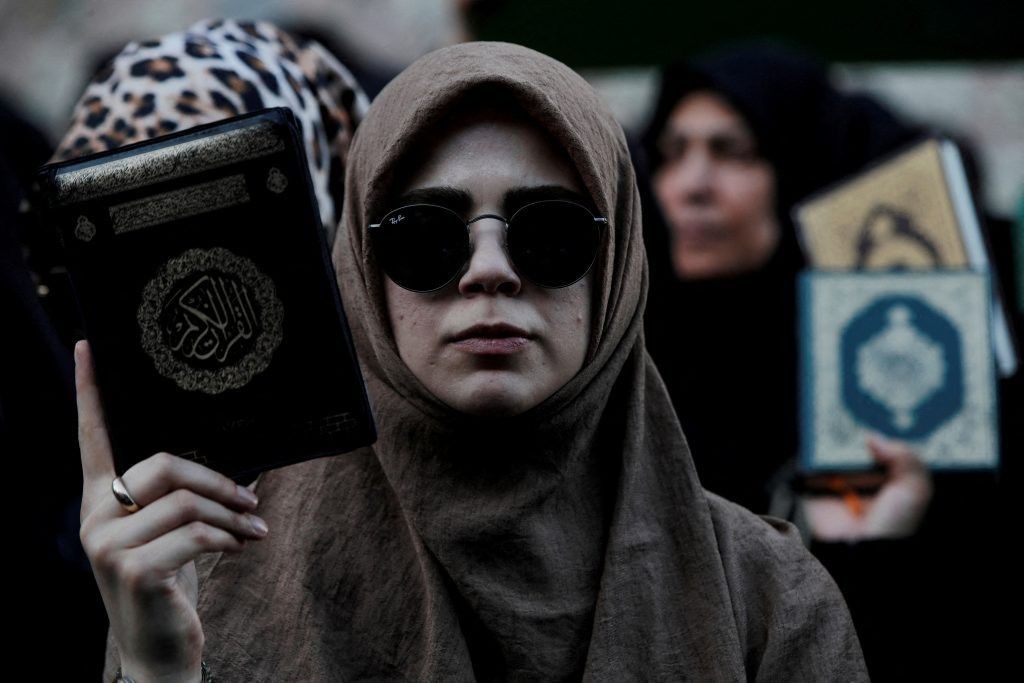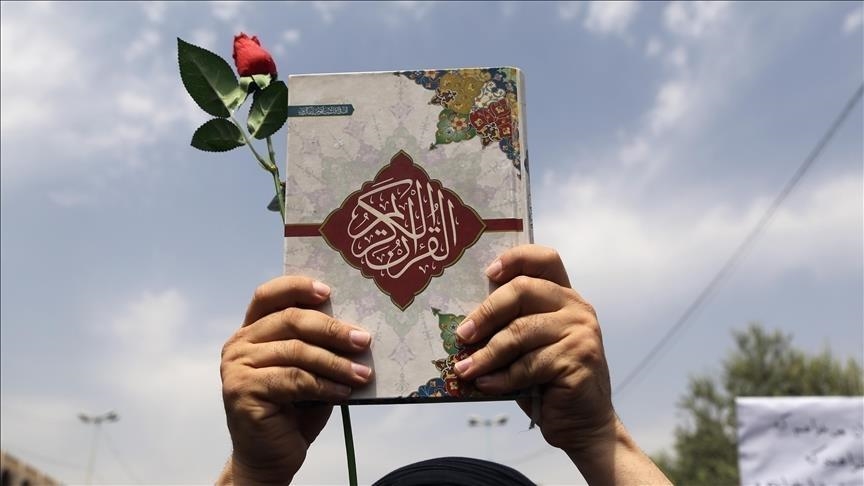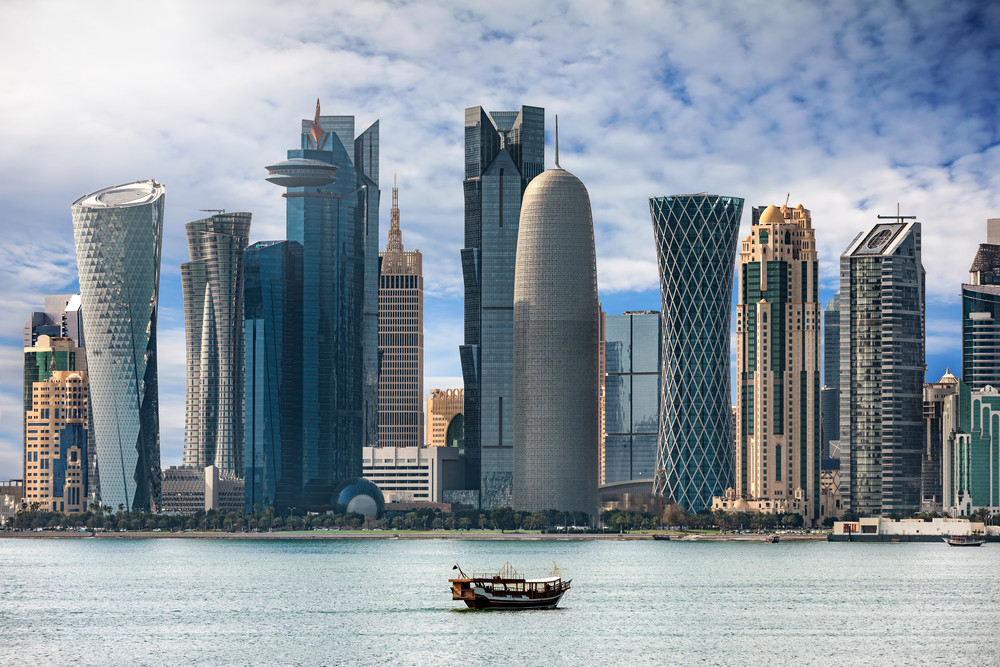Hiroshima Mayor Kazumi Matsui called out the nuclear deterrence policy of G7 leaders as "folly" at the memorial ceremony of the atomic bombing that was also attended by Japan Prime Minister Fumio Kishida.
https://p.dw.com/p/4Uotl
Japan on Sunday commemorated the 78th anniversary of the atomic bombing of Hiroshima in the final phase of World War II.
Considering the growing nuclear threat worldwide, the mayor of Hiroshima Kazumi Matsui called for the abolition of nuclear weapons and described the nuclear deterrence policy of G7 as "folly."
"They must immediately take concrete steps to move us from the dangerous present to our ideal world," he said as a peace bell rang on Sunday at 8:15 a.m. — exactly when on August 6, 1945, US bomber Enola Gay set off the world's first atomic bomb dropped on a population center.
This year, the G7 summit took place in Hiroshima, which happens to be Japan Prime Minister Fumio Kishida's home constituency.
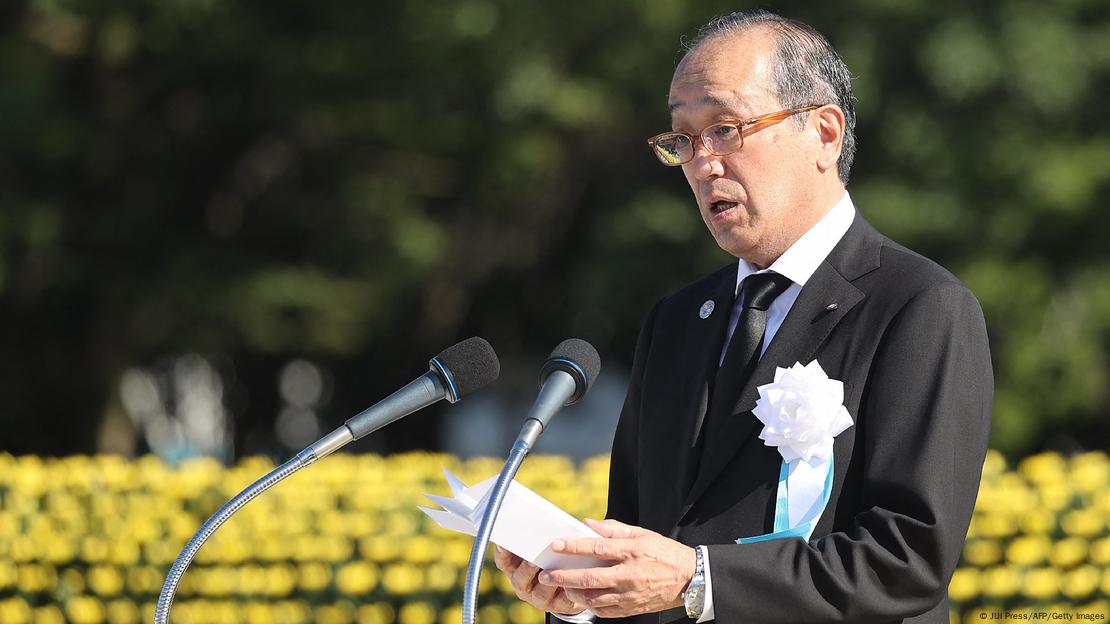
"Leaders around the world must confront the reality that nuclear threats now being voiced by certain policymakers reveal the folly of nuclear deterrence theory," Hiroshima Mayor Kazumi Matsui said at the ceremony which was also attended by Kishida.
At the memorial ceremony about 50,000 people, including aging victims who survived the bombing, gathered and observed a moment of silence.
Drums of nuclear war beating again: Antonio Guterres
The anniversary of the Hiroshima bombing was commemorated amid the growing threat of nuclear weapons propelled by Russia's invasion of Ukraine.
The issue poses a tricky balancing act for Kishida. Japan is traditionally an advocate of nuclear disarmament, in no small part because of the legacy of the attacks on Hiroshima and then Nagasaki three days later.
However, it also supports the partly nuclear-armed G7's group stance that members with atomic weapons shall retain them for as long as they're a necessary deterrent against other nuclear powers.
"World leaders have visited this city, seen its monuments, spoken with its brave survivors, and emerged emboldened to take up the cause of nuclear disarmament," he said in remarks read by a UN representative. "More should do so, because the drums of nuclear war are beating once again."
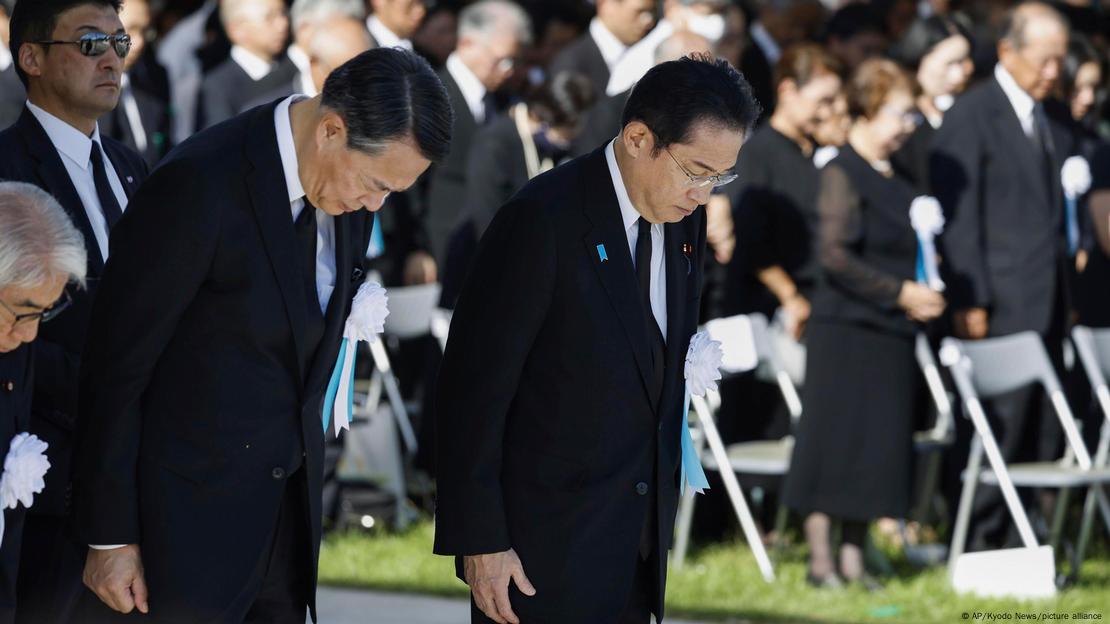
The American atomic bomb which was dropped on Hiroshima was nicknamed "Little Boy." It is thought to have killed as many as 140,000 people by the end of 1945. Three days later, the US dropped a second bomb on Nagasaki. It is believed to have killed up to 70,000 over the next four months.
A few days after the bombings, on August 15, Japan made an official announcement that it was surrendering. Soon after, on September 2, Japan formally capitulated, bringing an end to World War II in Asia
Whether using the bombs brought about a speedier, and possibly even more bloodless, end to the war or whether it was an ultimately unnecessary show of force remains a fierce debate among historians almost eight decades on.
Positive news and views. The best of Labour's Left Ideas.

Oppenheimer: what you need to know before watching – ICAN
By The International Campaign to Abolish Nuclear Weapons (ICAN)
The release of Christopher Nolan’s biopic about Robert J Oppenheimer – leader of the Manhattan project – is driving a lot of questions about nuclear weapons, who has them and how they (continue to) pose a global risk of catastrophe. Here are some key things you should know before going to see the film.
Looking for our action kit? Please click here.
Fact: The Trinity test left a terrible legacy of cancer on the communities living downwind.
The Trinity Test at Alamogordo was the first, but not the last, nuclear weapon test. Like the tests that would follow, it caused irreversible damage to the environment and surrounding communities.The communities of the Trinity fallout zone call themselves the ‘Tularosa Basin Downwinders’ because radiation was carried downwind from the test site to their communities. Safety came second at the Trinity Test: the fallout zone was dramatically underestimated, the effects were barely studied, and no one was evacuated. Residents were not told about the test even as fallout ‘snowed’ over their farms, homes, and wells. The damage became clear almost immediately.
In the months following Trinity (Aug, Sept, and Oct of 1945) infant mortality in New Mexico increased by 56%, many as a result of rare birth defects. Ionising radiation is particularly damaging to rapidly developing and dividing cells—affecting infants, children, and pregnant women. But when authorities were alerted, nothing happened. Read more here.
Myth: Nuclear weapons ended WWII
The contention that the atomic bombings saved more lives than they took by avoiding the need for the US and its allies to invade the Japanese homeland evades several important issues. First and foremost, it is not possible to know this for a fact because Japan did surrender.
Secondly, it means not having to properly address why, once Nazi Germany had surrendered, the weapon was then used against Japan which did not have a nuclear weapons project worth the name. For those who took the decision and those who have endorsed it since, it also conveniently avoids confronting the inhumane nature of these weapons and their knowing use against civilians, which even by the standards of the time many realised was a war crime.
Notably, several of the United States’ top military commanders believed the bombings played little part in Japan’s surrender. The Commander in Chief of the US Pacific fleet, Admiral Nimitz said: “The Japanese had, in fact, already sued for peace. The atomic bomb played no decisive part, from a purely military point of view, in the defeat of Japan.”
Fact: The risk of nuclear weapons use is higher than ever
Even before the war in Ukraine began, the UN was warning that “the risk that nuclear weapons will be used is higher now than at any point since the duck-and-cover drills and fallout shelters of the Cold War.” Analysts for the Bulletin of Atomic Scientists calculated that a child born today is unlikely to live out their natural lives without seeing nuclear devastation.
Since the Russian invasion of Ukraine, and the barrage of nuclear threats and retaliatory statements that have followed, those risks have only increased. That is why the Doomsday Clock is now closer to midnight than it has ever been before. The terrifying but true reality is that we cannot know for certain if Putin – or any leader of a nuclear-armed state – will use nuclear weapons at any time. What we do know is that nuclear weapons pose unacceptable humanitarian consequences – and that there is no response capacity to help survivors in the aftermath.
Myth: Nuclear weapons prevented major conflict or even a third world war
There is no evidence that nuclear weapons deter war and preserve strategic stability beyond the correlation of the existence of these weapons with the fact a third world war has not – yet – occurred.
The mutual build-up of nuclear weapons between the USSR and the US in the Cold War may have prevented the two from engaging in war with one another directly, however, proxy wars (generally on the territories of developing nations) continued. War did not end with the development of the bomb. The chance that one of the proxy wars could have flared into a nuclear war was very close- several times. Also, while – luckily – there hasn’t been a nuclear war since 1945, nuclear weapons have not protected countries from conventional attack.
In 1982, Argentina went to war with Britain over the Islas Malvinas / Falkland Islands and the US nuclear arsenal did not deter Al Qaida from mounting the 9/11 attacks on New York and Washington. Not to mention the 1973 Yom Kippur war and the Kargil War in 1999.
Fact: the 9 states with nuclear weapons are wasting billions of public money each year on their arsenals
In 2022 alone, the nine countries armed with nuclear weapons spent $82.9 billion on their nuclear arsenals, 35% of which went into the private sector. The United States spent more than all of the other nuclear armed states combined, $43.7 billion. Russia spent 22% of what the U.S. did, at $9.6 billion, and China spent just over a quarter of the U.S. total, at $11.7 billion.
Myth: Nuclear weapons are safer today than they were when they were first invented
Nuclear weapons today have much greater destructive power than the first bombs in the 1940s. The bombs used on Hiroshima and Nagasaki were equivalent to 15 and 20 kilotons of dynamite which by today’s standards is considered a “low-yield” nuclear weapon. The B83, the largest deployed US nuclear warhead, is equivalent to 80 Hiroshima-sized bombs. At the start of 2023, the US nuclear arsenal of 5,244 nuclear weapons had a total yield of 857.6 megatons, or the equivalent of 57,173 Hiroshima-sized bombs. That’s an average of 164 kilotons per nuclear warhead in the US arsenal. Russia, with 5,889 nuclear warheads, has the equivalent of 65,240 Hiroshima-sized bombs.
There have been many accidents and incidents where nuclear weapons almost detonated or were nearly used since 1945 and it is matter of luck and individuals who were prepared to defy peer pressure and military protocols being in the right place at the right time, including during the Cuban Missile crisis, that nuclear war has so far been avoided.
Daniel Ellsberg, the US military analyst who leaked the Pentagon Papers, notes in his book Doomsday Machine: Confessions of a Nuclear War Planner that the military bureaucracy associated with the cold war and mutually assured destruction has largely stayed intact. The maintenance of the status quo in nuclear weapons policy, along with the maintained and constant threat of use, largely suggests we are no safer from nuclear weapons than we were since their first invention.
Most notably, the Doomsday Clock set by the Bulletin of the Atomic Scientists, of which Oppenheimer was a founder, in 2023 put the world at 90 seconds to midnight — the closest we have been in history. This means that we are much less secure than we have ever been in regards to nuclear war.
Fact: You can’t un-invent nuclear weapons, but you can reject them
The knowledge of how to build nuclear weapons is out there, one doesn’t even need to go to the dark web to find schematics. But, just because you can figure out how to do it, doesn’t mean a country will choose to do so. Many countries could make nuclear weapons but have decided not to do so – and the non-diversion of nuclear materials used for nuclear energy to weapons is verified by a highly effective international system of safeguards run by the International Atomic Energy Agency (IAEA). This system could be adapted and extended to all countries once those with nuclear weapons have made the choice to disarm.
Dangerous technology can be and has been successfully controlled. Chemical and biological weapons have been outlawed, as have anti-personnel landmines, cluster bombs and blinding laser weapons. Useful and economically important industrial chemicals that proved to be health hazards or dangerous environmental pollutants have been banned and their use stopped worldwide. It is entirely possible and nuclear weapons are no different. There is nothing magic about them.
Fact: The horrific impact of the Hiroshima and Nagasaki bombings created the nuclear taboo that has helped prevent the further use of nuclear weapons
Nuclear weapons haven’t been used in warfare since 1945. The reports, initially by the International Committee of the Red Cross and devastating images and stories that eventually made their way out of Hiroshima. John Hersey’s coverage in 1946 told the human impact, about the people with melted eyeballs, or people vaporised, leaving only their shadows etched onto walls, cementing the horrors of nuclear weapons use into the public’s imagination.
There are several moments in which the world came dangerously close to the use of nuclear weapons in warfare again, notably during the Cuban missile crisis when it was a combination of luck and the presence of individuals on the ground willing to make their own minds up that prevented nuclear weapons being used.
More recently, Russia’s full-scale invasion of Ukraine under cover of repeated nuclear threats and with nuclear tensions on the Korean Peninsula running consistently high, the discussion of the use of nuclear weapons has become normalised which risks undermining the nuclear taboo.
Myth: Doesn’t deterrence mean never using nuclear weapons?
The theory of nuclear deterrence requires that the threat of use of nuclear weapons be credible. That means that countries who subscribe to nuclear deterrence doctrines are prepared to incinerate cities and mass murder civilians. It also requires leaders to act rationally and predictably- and history shows that’s not what happens in conflict situations. Deterrence is often given the credit for the long record of non-use of nuclear weapons, but much of it is due solely to good luck – which cannot be expected to last forever.
The risk of nuclear weapons being used, whether deliberately, by accident, or miscalculation, is real. It literally could happen at any moment. Worse, many experts assess that the risk of use of nuclear weapons is increasing, due in part to the increased speed of warfare enabled by the expanded use of artificial intelligence by the military. Unless nuclear weapons are eliminated, sooner or later they will be used – and the consequences will be catastrophic.
Myth: Doesn’t Russia’s use of nuclear blackmail over Ukraine show the need for nuclear deterrence?
While it seems Russia’s nuclear weapons may have deterred the US and NATO from direct military confrontation with Russia in defence of Ukraine, western countries have armed and financed Ukraine to the extent that it has been able to push Russian forces back and may even be able to expel them from the areas it has captured since the full-scale invasion started.
So the response to Russia’s actions, including its nuclear threats, has been large-scale coordinated action across diplomatic, economic, financial and military fields and Russia has failed to coerce other countries into not supporting Ukraine.
Furthermore, Russia’s attempt to use nuclear threats as a cover for its full-scale invasion of Ukraine, on the assumption other countries would be deterred from helping Ukraine, shows that nuclear deterrence is a flawed strategy and these weapons don’t preserve stability, but in fact undermine it.
- This article was originally published by The International Campaign to Abolish Nuclear Weapons (ICAN) on July 10th, 2023.
- You can follow ICAN on Facebook, Twitter and Instagram.
- Featuered image: Picture of an atomic bomb explosion. From FEMA (U.S. Federal Emergency Management Agency) publicity poster. Photo credit: FEMA News Photo Public Domain Image
Remember Hiroshima
Yorkshire Campaign for Nuclear Disarmament (CND)’s Sam Legg travelled to Hiroshima earlier this year. In this article he writes about how the trip impacted his campaigning for a world without nuclear weapons.
In April, I visited Hiroshima for the G7 Youth Summit. I was very grateful to have been chosen as a representative for the UK peace movement at this meeting, alongside other representatives from Christian CND and SCRAP Weapons. Whilst the anti-nuclear movement in the UK is not as strong among young activists as it once was, meeting over 50 other young peace activists filled me with enthusiasm for what is possible.
The summit aimed to present a youth voice to the G7 leaders, by using the summit’s presence in Hiroshima as an opportunity to highlight the dangers of nuclear weapons. Over the course of three days’ worth of workshops, talks, and museum trips, all the participants gathered knowledge to strengthen our understanding to collectively write a youth statement for the G7 leaders.
Learning about the bomb through presentations was one thing, however, seeing and hearing its impact was another. Seeing with my own eyes how it changed the landscape of Hiroshima was an emotional, heavy experience. But it was the voice of the Hibakusha – those directly affected by the nuclear bombings of Hiroshima and Nagasaki – that really stood out to me as the most powerful part of the trip.
The voices of those that lived a life pre, during, and post-bomb won’t be around forever. These stories are heartfelt and first hand. Whilst it is indeed important to recognise the statistics, being told stories from Hibakusha definitely deepens the realness of the bomb and, perhaps most importantly, its impact on the individual daily lives of people. Having reflected on and heard of the abuse that survivors such as Ms. Keiko Ogura would endure for years afterwards – the constant prejudice, and constant worry about whether the radiation would affect her children, what needs to be spoken of more is the post-bomb impact.
Whilst the G7 summit did not bring the progress we wanted, we must not give up! Moving forward, we must think of ways to utilise the powerful stories of Hibakusha, so that we create no further victims of nuclear weapons. There is no action without inclusion, so we must consider intersectionality and seek ways to engage in more discussions internationally. This should be with other peace activists and those affected communities of nuclear weapons (including those outside of Japan e.g., the Marshall Islands). I strongly believe that a more peaceful world is possible. It will take time, but it is worthwhile pursuing that goal.
Please mark the anniversary of the bombings (6th & 9th August). Use this time to reflect, strategise, and enthuse new audiences (and old ones!).
- This article was originally published in the Campaign for Nuclear Disarmament (CND) campaign August 2023 edition.
- You can follow CND on Facebook, Instagram and twitter.



